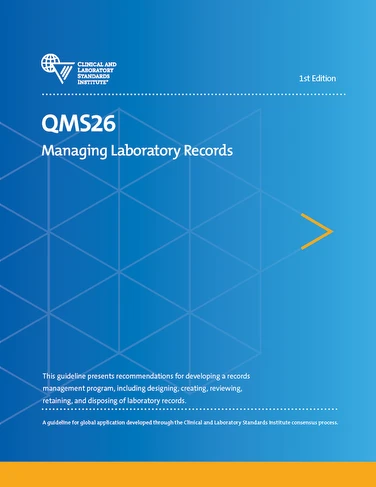You'll receive the latest updates on new standards, guidelines, and educational resources, as well as expert insights to help enhance your laboratory's performance and compliance.
CLSI Publishes New Guideline CLSI QMS26—Managing Laboratory Records

Malvern, PA—The Clinical and Laboratory Standards Institute (CLSI) has published the first edition of CLSI QMS26—Managing Laboratory Records. CLSI QMS26 is intended to help laboratories meet quality management system requirements for the records portion of quality system essential documents and records management. It presents recommendations for developing a records management program, including designing, creating, reviewing, retaining, and disposing of laboratory records.
CLSI QMS26 also includes helpful appendixes with examples of a:
- Records retention schedule.
- Records storage facility contract.
- Records access request form.
Karen Heaton, MLT(CMLTA), Chairholder of CLSI QMS26 said, “Although much has been written about document management, little has been published about laboratory record management, other than the need for a records retention schedule. This new guideline presents the elements of a laboratory records management program that progresses from creating records at the time of doing work, through accessing and maintaining the records, to their final disposition. Suggestions for how to meet regulatory and accreditation requirements for laboratory records and examples of good practices are included.”
For more information about CLSI QMS26, contact CustomerService@clsi.org or +1.610.688.0100.
CLSI sets the standard for quality in medical laboratory testing. A not-for-profit membership organization, CLSI brings together the global laboratory community for the advancement of a common cause: to foster excellence in laboratory medicine.
For over 50 years, our members, volunteers, and customers have made CLSI a respected, transformative leader in the development and implementation of medical laboratory testing standards. Through our unified efforts, we will continue to set and uphold the standards that drive quality test results, enhance patient care delivery, and improve health care around the world.
By using CLSI standards, laboratorians can improve process quality, speed the development of standard operating procedures, and implement safer practices with greater ease and efficiency.